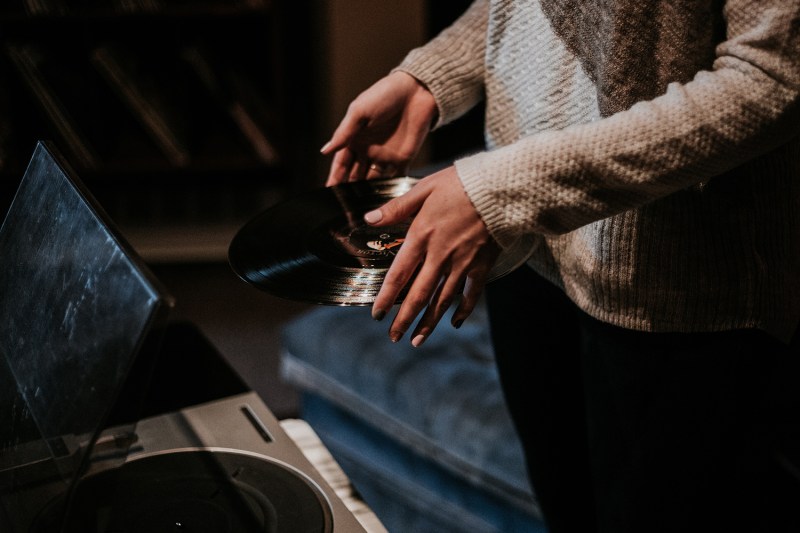
Despite — or perhaps because of — its many flaws, vinyl persists. Though record players are admittedly flashier and more high-tech these days, the record format itself has changed little since Emile Berliner spun the first gramophone disc in 1887. A basic stylus rubs some spinning plastic to create a classic, unmistakable sound.
In the ’90s and into the 2000s, digital downloads promised to be the death knell for vinyl. For years, CD and record stores became alternative outlets catering mainly to DJs, hipsters, and self-proclaimed audiophiles. Now, physical music formats have returned in a big way. Last year, CD and record sales eclipsed digital downloads for the first time in six years. It’s been called a return to “tangible music.”
If you’ve developed a newfound appreciation for the sweet, soulful sound of vinyl, you’re no doubt in the market for a new or vintage record player. The problem is: Where do you start? Let’s break it down.
How Much to Pay for a Record Player
Like amps, laptops, and sushi, you get what you pay for when buying a record player. Invest wisely now to save yourself unnecessary headaches and from spending more money on repairs or replacements down the road.
In our opinion, the sweet spot for turntable newbies is in the $250-$500 range.
In our opinion, the sweet spot for turntable newbies is in the $250-$500 range. Any less than $200 and you’re getting into all-in-one-style (dare we say “novelty”) boxes that offer plenty of bells and whistles, but are rarely built to last. Even worse is that low-quality components can actually damage your records. This is especially true in the sub-$100 range with brands like Crosley.
In general, spending over $500 promises more features, a better build quality, and purer sound. But those returns are diminishing and, frankly, only true audiophiles and professional DJs are likely to appreciate them. If you’re new to the game, save your money and put those extra dollars into some decent speakers or, better yet, expanding your vinyl collection.
Vintage or New?
The decision to buy new or vintage depends on what matters most to you. Above the $200 floor, most modern models offer more features than their decades-old predecessors. Expect things like Bluetooth audio (great for wirelessly streaming your vinyl collection) and USB out ports for digitizing your entire collection. Like in the automotive industry, the best features always trickle down from high-end luxury brands to their more affordable counterparts. Most modern record players, for example, offer better speed-control and advanced electric motors — both previously only available as high-end “options.” That same technology is produced cheaper now than it was in vinyl’s heyday meaning that comparable record players cost less today than in previous decades.
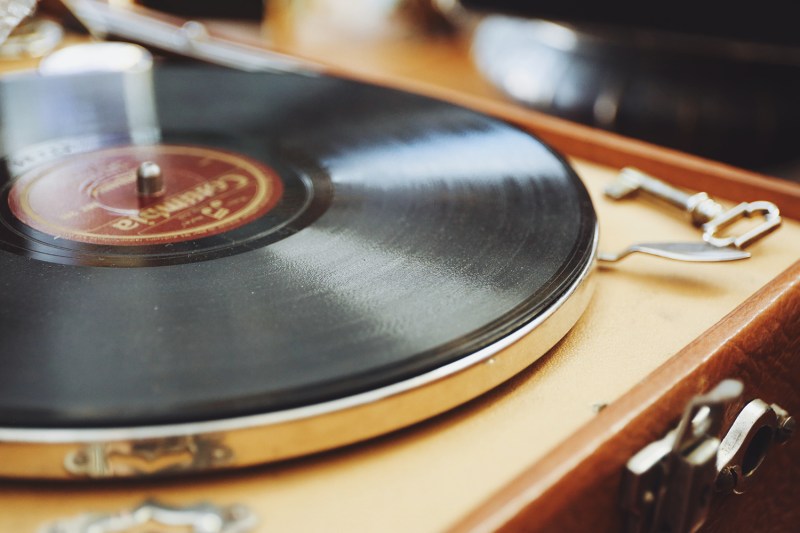
Whether you choose to buy new or vintage, you should know what to expect. Trying to revive a second-hand player that you scored from your pot-smoking uncle might seem like a cool side project. However, if you’re new to record players, it’s likely to cost more to restore than buying straight from a reputable source. Legit stereo shops and record stores are likely to have quality second-hand players at a great price, and they’re often refurbished to semi-new condition.
For the most part, a decent record player — new or vintage — should require little to no tinkering once it’s setup. But, as with buying a printer, it’s important to consider the availability of replacement parts. Needles and cartridges wear out eventually. Before you dive head-first into a 30-year-old player, consider whether the necessary disposables will be easy to find in the future.
Belt Drive or Direct Drive?
Another consideration when buying a record player is between direct drive or belt drive. With direct-drive turntables, the platter is spun via a motor attached directly to the spindle. When the motor spins, the platter immediately spins as well. Belt-driven models, on the other hand, attach the motor to a flywheel away from the spindle and connect the two by a rubber belt.
Further Reading
Direct-drive models can take more abuse which is why DJs often favor them. The design allows for near-instant startup and greater control over the playback speed, allowing artists to easily beat-match and blend songs into one another. Purists argue, however, that the nature of the motor’s design can inject unwanted noise into the audio.
On paper, belt-driven players typically boast better sound which is why they tend to be the preferred choice for audiophiles. However, they also require a little additional maintenance. Over time, the rubber belts will slip and stretch and need repair or replacement.
There are pros and cons to both designs, but the bottom line for first-time record player buyers is that it’s not a point worth getting too hung up on.
A Few More Things to Consider
Turntable mechanics haven’t changed much in more than a century. However, there are a handful of modern features that set individual models apart. The folks at any legit stereo shop can usually elaborate on these points.
Automatic turntables provide push-button start and stop functionality which is certainly more convenient. Purists, however, enjoy the old-school feel of setting the needle down on the record manually. Neither option is better; it’s all a matter of personal preference.
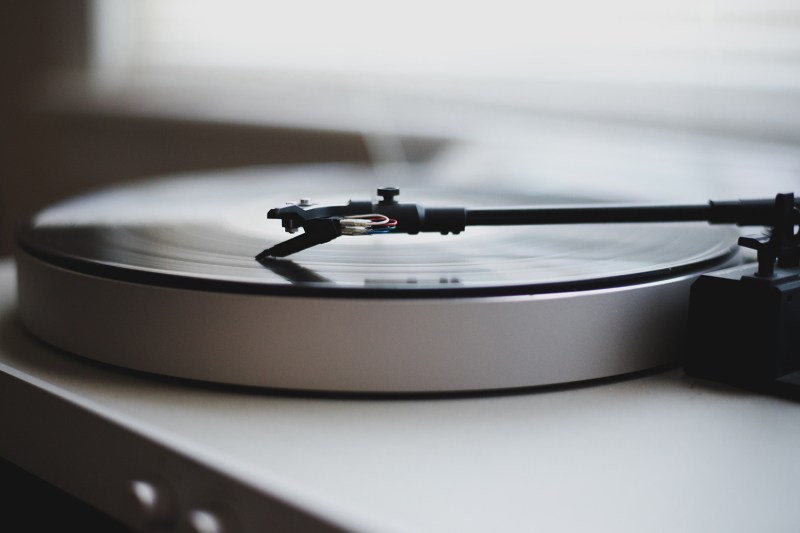
Since you’ll likely be connecting your new record player to a home stereo system, double-check that the latter has a dedicated turntable input. If not, you’ll need to invest in an external preamp or a player with a built-in phono preamp. Otherwise, you’ll hardly be able to hear the audio.
Better quality decks include an adjustable tonearm capable of using a variety of cartridges. They also typically boast a more balanced platter for a smoother rotation that equates to better sound quality. Check to see whether the stock platter is replaceable as this can be a great way to upgrade an entry-level or mid-range player. A vibration-reducing design also helps eliminate unwanted shake — whether from your noisy neighbors upstairs or from the stereo system itself — while the platter is spinning.
Best Record Players to Buy
Now that your head’s spinning (get it?), the big question is: Which model should you buy?
Audio-Technica AT-LP120-USB
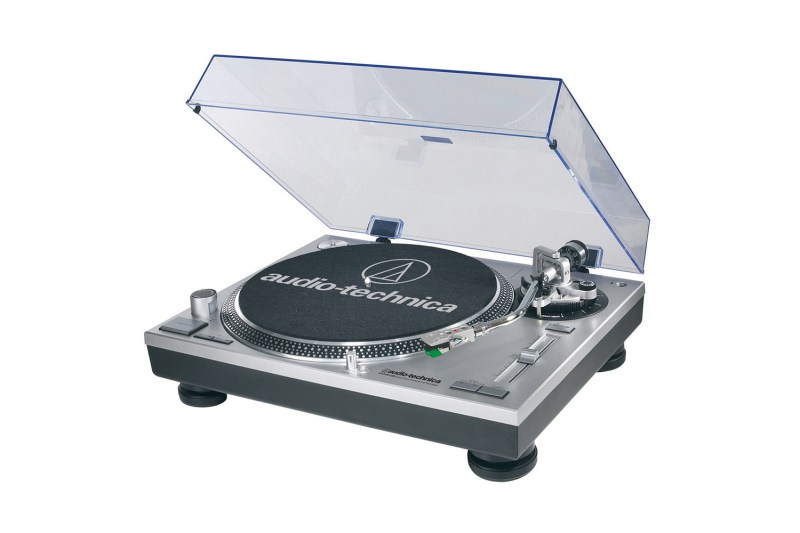
If you’d rather not overthink the buying process, we recommend heading straight for the Audio-Technica AT-LP120-USB. The prosumer deck has become something of a gold standard among budding audiophiles, wannabe DJs, and anyone looking to take their vinyl music collection more seriously. Given the long list of features, the $299 suggested retail price (although it can be found on Amazon for less) feels almost like stealing it. It boasts a high-torque direct-drive motor and cast aluminum platter — both designed to take a beating. It’s three-speed selectable (33/45/78) with a fully adjustable tonearm. Built-in USB output with free Audacity software makes it easy to digitize your vinyl collection. Plus, with the integrated pre-amp, it connects directly to your home speakers without the need for additional components. We also dig the subtle retro-cool design which is available in silver or black.
Pro-Ject Debut Carbon
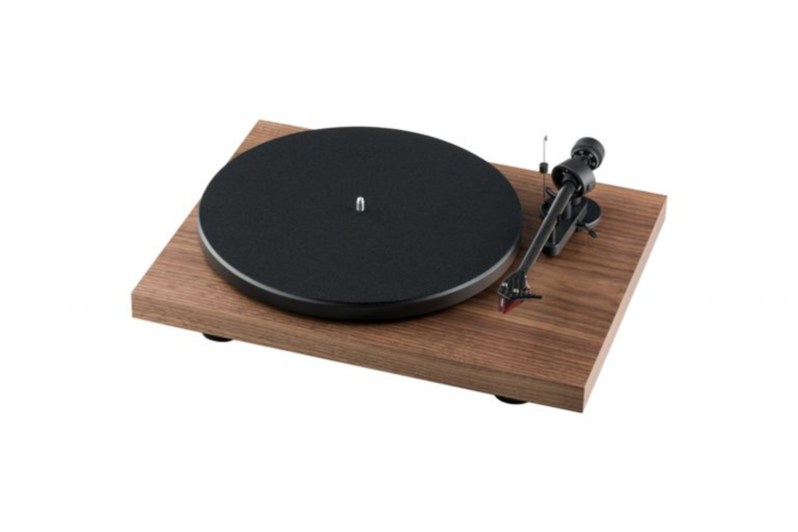
If aesthetics are important and you’re willing to spend a bit more, Pro-Ject’s Debut Carbon line of belt-driven turntables is an excellent alternative to the AT-LP120. At upwards of $400-$500, they’re certainly pricier. But, they offer many of the same features. Plus, the minimalist design is available in nine high-gloss colors to match just about any home.
Sony PS-HX500
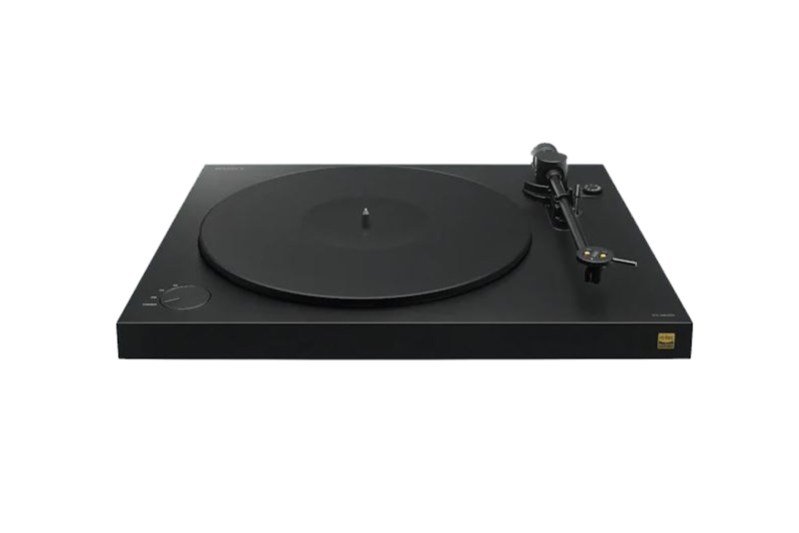
If modern tech features are key, Sony offers a solid line of entry-level and mid-range decks. The Sony PS-HX500, in particular, is a great option for first-timers. Its biggest strength is its ripping capability. The combination of an analog-to-digital converter with premium conversion software makes it a solid choice for anyone looking to digitize their vinyl collection. Like the Project DC, the sleek, black-on-black, minimalist look is designed to blend into any decor. It retails for around $400, but open box buys can be found online for less.
Of course, a handsome new record player begs for an equally handsome record console and some appropriate vinyl-centric accessories. If money is truly no object or you’re looking for some daydream-worthy music room inspiration, check out our complete guide to creating the ultimate man cave for music lovers.


